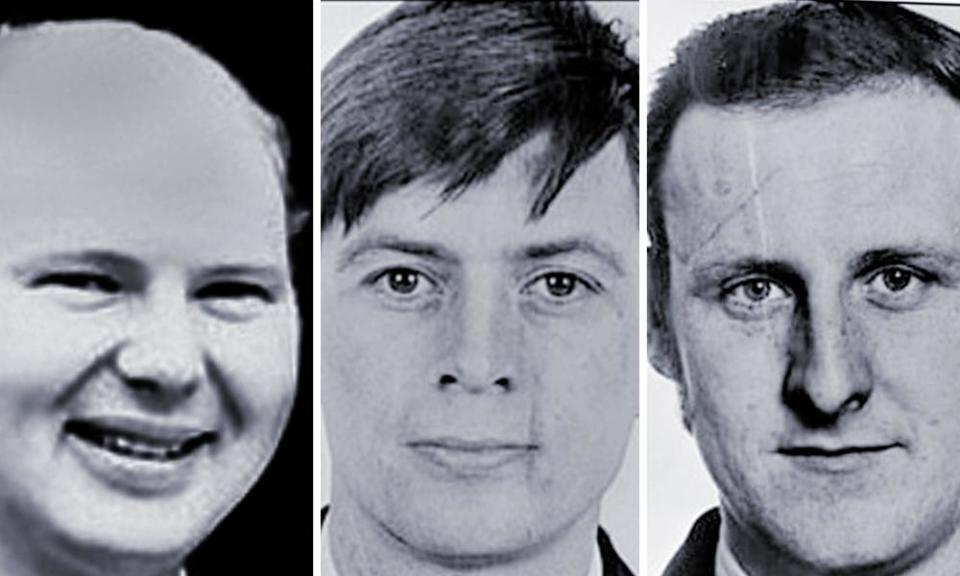Police hope DNA from helmets will solve 1982 Troubles murder case

DNA contained within two crash helmets will, police believe, reveal the identities of IRA suspects who carried out a landmine attack that killed three police officers in Northern Ireland four decades ago, the head of an investigation into historical killings during the Troubles has said.
The head of Operation Kenova, which is reopening the files on several unsolved historic and controversial crimes from the Troubles, confirmed that advanced forensic and DNA tests had been carried out on helmets as part of his investigations into the explosion.
Jon Boutcher, the former chief constable of Bedfordshire, confirmed on Tuesday that his inquiry team into the triple murder has “made significant progress applying modern forensic techniques that would never have been available and would not have been known about by those responsible for the attack in 1982”.
The Guardian has learned that the suspects are still alive, including one man who was an expert bomb-maker for the IRA during the Troubles. It is understood the inquiry team are aware of the men’s identities.
Boutcher is in charge of a number of Troubles-related inquiries, including one into one of the biggest spy scandals in British espionage history – “Stakeknife”. He was the one-time head of the IRA’s internal security unit, who was working as a double agent for British intelligence.
As well as investigating Freddie Scappaticci, the 73-year-old alleged to be Stakeknife (the Belfast man denies he was the agent), Boutcher’s brief includes other unsolved killings from the Northern Ireland conflict.
These include the murders 38 years ago on Tuesday of three policemen who died in an IRA landmine attack on the M1 motorway near Lurgan in North Armagh.
Sergeant Sean Quinn, 37, and PCs Paul Hamilton, 26, and Alan McCloy, 34, were killed on 27 October 1982, when an explosion threw their unmarked Ford Cortina 70ft into an adjoining field. Despite various investigations and nine arrests, no one has ever been charged with the murder of the three officers.

Boutcher’s detectives found the two helmets, which were still in the possession of police in Northern Ireland, during their inquiries. His team also liaised closely with the families of the victims.
He said the progress made in the 38-year-old case “demonstrates that legacy investigations into the Troubles can be done and done properly, especially in the interest of the victims”.
Operation Kenova’s chief said he also believed that the two-man IRA unit responsible for detonating the landmine was seen abandoning a motorbike and the helmets minutes after the blast in Lurgan’s Francis Street.
Appealing to anyone who witnessed this at the time, Boutcher added: “We will treat any information with the utmost care and protect the identity of anyone who saw these men discard their bike and their helmets back then.”
The murdered men’s families have welcomed Boutcher and his detective team’s intervention in the case. In a statement released through their solicitor on the 38th anniversary of the triple killing, the families said: “For a long time, we believed this appalling terrorist crime would remain unsolved.
“Now, however, with ‘encouraging progress’ achieved, we have been given renewed hope that the culprits will be identified, and with that, we will have achieved a sense of closure that has eluded us for far too long.”

 Yahoo News
Yahoo News 
